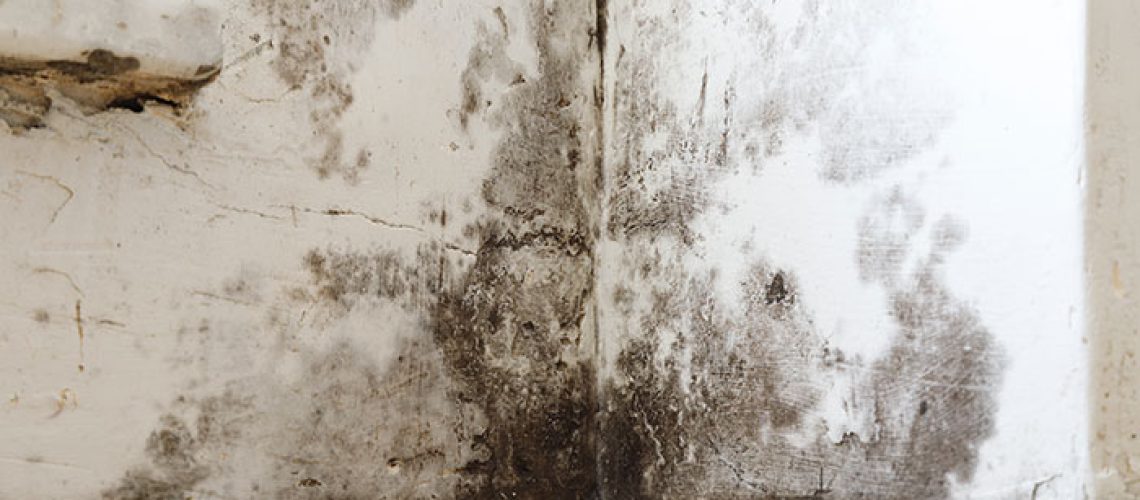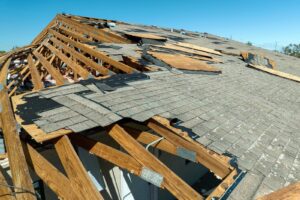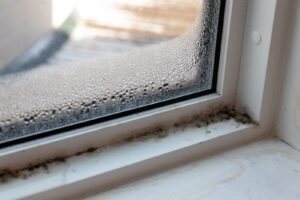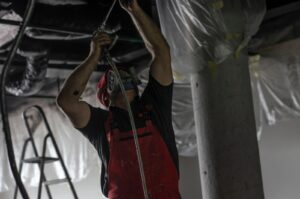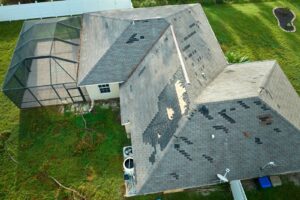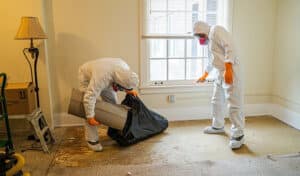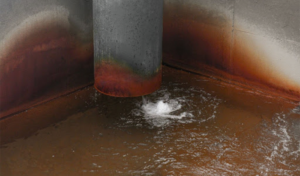Mold is a common problem in many homes and buildings, and it can be unsightly, unpleasant, and potentially harmful to your health. While it can grow almost anywhere under the right conditions, it is particularly common on walls, especially in humid areas such as bathrooms and kitchens. Understanding why mold appears on walls is essential to prevent its growth and keep your home or building healthy and safe.
In this blog, we’ll explore the causes of mold growth on walls and how to prevent it. We’ll also discuss the signs of mold growth and how to safely remove mold from walls. By the end of this article, you will better understand the causes of mold growth, how to prevent it, and the steps to take if you find mold on walls in your home.
Understanding Mold
Before we dive into the causes of mold growth, let’s first define what mold is. Mold is a type of fungus that thrives in warm, damp, and humid conditions. It reproduces by releasing tiny spores into the air, which can land on a suitable surface and grow into new mold colonies.
Mold can come in a variety of colors and textures, from black and green to fuzzy or slimy. While some types of mold are harmless, others can cause health problems, especially for people with allergies, asthma, or weakened immune systems.
Mold is a resilient and versatile organism that can grow on virtually any surface. This means it can thrive on walls, ceilings, floors, carpets, and furniture. Mold growth on porous surfaces such as carpets and furniture can be particularly challenging to remove, as the spores can penetrate deep into the fibers. Even hard surfaces can be susceptible to mold growth if they are exposed to moisture and humidity for an extended period.
It is essential to address mold growth on walls as soon as possible to prevent it from spreading and potentially causing structural damage or health issues.
Causes of Mold Growth on Walls
Mold on walls can be caused by various factors, but the primary cause is moisture. When walls become damp or wet due to condensation, leaks, or high humidity, mold can start to grow. Moisture can come from a variety of sources, including cooking, bathing, and even breathing, which is why proper ventilation is critical in preventing mold growth on walls.
Condensation is a common cause of mold growth on walls, particularly in rooms with poor ventilation. When warm, moist air comes into contact with a cold surface, such as a wall or window, the moisture in the air can condense into droplets. Over time, these droplets can accumulate and create an environment where mold can grow.
Leaks are another common cause of mold growth on walls. Leaking pipes, roofs, or windows can introduce moisture into walls, leading to mold growth. It’s essential to fix any leaks as soon as they are detected to prevent further damage to the walls and potential health risks associated with mold growth.
High humidity is also a significant contributor to mold growth on walls. Humidity levels above 60% provide an ideal environment for mold to thrive. Bathrooms, kitchens, and other areas where water is used frequently are particularly susceptible to mold growth due to the high humidity. Proper ventilation, such as exhaust fans, can help to reduce humidity levels and prevent mold growth.
Finally, porous surfaces such as drywall, wallpaper, and paint can also contribute to mold growth on walls. These materials can absorb moisture, providing an environment where mold can grow and thrive. It’s essential to address any signs of mold growth on these surfaces as soon as possible to prevent further damage to the walls and potential health risks.
Signs of Mold Growth on Walls
Identifying mold growth on walls is crucial to prevent potential health risks and structural damage. Here are some common signs of mold growth on walls:
- Discoloration: Mold can cause walls to appear discolored, often in shades of green, black, or brown. Discoloration can occur in patches or streaks, which may appear fuzzy, slimy, or powdery in texture.
- Musty odor: Mold has a distinct, earthy smell that can be noticeable even before any visible signs of growth appear.
- Peeling or bubbling paint or wallpaper: When moisture gets trapped between the wall and the paint or wallpaper, it can cause the surface to bubble, peel, or warp.
- Water stains: Stains on walls that have a water-like appearance may indicate a leak or condensation, which can contribute to mold growth.
- Cracks or deterioration: Mold growth can cause structural damage to walls, leading to cracks or deterioration.
If you notice any of these signs, it’s vital to take action to address the issue and prevent the spread of mold on the walls. Early detection is key to minimizing the risk of health problems and structural damage associated with mold growth. In the next section, we’ll explore how to prevent mold growth on walls and what to do if you find mold in your home or building.
How to Prevent Mold from Growing on Your Walls
Preventing mold from growing on your walls is crucial to maintaining a healthy and safe environment in your home or building. Here are some tips to prevent mold growth:
- Control moisture: Mold thrives in damp and humid environments, so controlling moisture is crucial in preventing mold growth. Fix any leaks, install ventilation fans in bathrooms and kitchens, and use a dehumidifier if necessary.
- Improve air circulation: Good air circulation can help prevent moisture buildup and mold growth. Open windows, use fans, and keep furniture and belongings away from walls to improve air circulation.
- Monitor humidity levels: Keep humidity levels in your home or building below 60 percent. You can use a device to monitor humidity levels.
- Use mold-resistant materials: Use mold-resistant drywall, paint, and wallpaper to prevent mold growth. These materials are designed to resist moisture and prevent mold growth.
- Clean and maintain: Regularly clean and maintain your home or building to prevent mold growth. Clean up any spills or leaks immediately, and regularly clean bathrooms and kitchens to prevent moisture buildup.
By following these tips, you can help prevent the growth of mold on the walls of your home and keep your home or building healthy and safe. However, even with preventative measures, mold can still occur. In the next section, we’ll explore what to do if you find mold on walls in your home.
How to Remove Mold from Your Walls
If you discover mold on the walls within your home, it’s important to take action immediately to prevent the mold from spreading and causing further damage. The first step in removing mold from your walls is to ensure your own safety. Wear gloves, a face mask, and protective eyewear to avoid direct contact with the mold and prevent inhalation of mold spores.
Next, identify the source of the moisture that is causing the mold growth and fix it to prevent it from recurring. Once you’ve addressed the source of the moisture, you can begin to prepare the area for cleaning. Seal off the area with plastic sheets to prevent mold spores from spreading to other parts of your home or building. Turn off any HVAC systems in the area to prevent the spread of spores through the air.
To remove the mold, you’ll need a mold cleaner specifically designed for the type of surface you’re cleaning. Be sure to follow the instructions on the product carefully, and wear protective gear while cleaning. Scrub the affected area with a stiff brush or sponge, and rinse the area with clean water. After cleaning, use a wet-dry vacuum to remove any excess moisture from the area.
When to Call Restoration Professionals
While it’s possible to remove small amounts of mold from walls using household cleaners, larger mold infestations require the expertise of restoration professionals.
One of the signs that it’s time to call in the experts is when the mold covers a large area. If the mold growth covers more than 10 square feet, it’s best to call a professional mold remediation service.
Large mold infestations require specialized equipment and expertise to properly remove and prevent their return.
Another sign that it’s time to call in restoration professionals is when you or anyone in your home or building is experiencing health problems. If you’re experiencing respiratory problems, allergies, or other health issues, it’s best to call in a professional mold remediation service. Mold spores can be harmful to your health, and it’s important to have them properly removed to ensure a safe living environment.
In addition, if you’ve tried to remove the mold yourself and it keeps coming back, it’s time to call in the professionals. This could be a sign of a deeper problem, such as a hidden water leak or a problem with your ventilation system. Restoration professionals have the tools and expertise to identify and address the underlying problem to prevent the mold from returning.
Overall, it’s best to err on the side of caution and call in restoration professionals. They have the knowledge, experience, and specialized equipment necessary to properly remove mold and ensure a safe living environment.
What Will the Professionals Do Differently?
When it comes to mold removal, professional restoration companies have the experience, expertise, and specialized equipment to handle even the most severe cases. They will conduct a thorough inspection to identify the extent of the mold growth and develop a comprehensive plan to remove it safely and effectively.
Professionals use specialized containment measures to prevent mold spores from spreading to other areas of the building during removal. They also use advanced cleaning and disinfecting techniques to eliminate any traces of mold and prevent it from returning. Additionally, restoration professionals can help address any underlying moisture issues to prevent future mold growth.
Trust Restoremasters to Handle Your Mold Problem
If you’re dealing with a mold problem in your home or business, don’t wait to take action. Mold growth can lead to serious health problems and damage to your property. At Restoremasters, we’re here to help you tackle your mold problem head-on and get your property back to a safe and healthy state.
Our team of restoration professionals has the knowledge, experience, and specialized equipment necessary to properly remove mold and prevent its return. We take a thorough, comprehensive approach to mold remediation, identifying the root cause of the problem and implementing solutions to prevent future growth.
When you choose Restoremasters for your mold remediation needs, you can rest assured that you’re getting top-quality services from a team that cares about your health and safety. We’ll work with you every step of the way to ensure that your property is properly restored and that you’re completely satisfied with our services.
Don’t let mold take over your home or business – contact us using our online form or call us at 801-446-6727 today to schedule your mold removal services.

